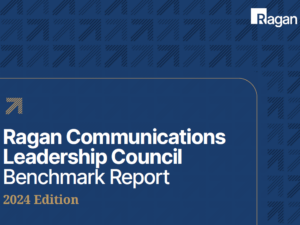Using data to fuel more robust and persuasive messaging
Numbers, when used to tell a great story, can be your secret weapon in convincing skeptical audiences and driving key metrics.

The use of quantitative data in communication can be very powerful. However, numeric information is only effective if people understand it.
Ellen Peters, the Philip H. Knight chair and director of the Center for Science Communication Research (SCR) at the University of Oregon, has studied and written about human judgment and decision-making with a particular focus on numbers and numeracy, which is the ability to process and use numbers effectively.
In her 302-page book, “Innumeracy in the Wild: Misunderstanding and Misusing Numbers,” she sets out to answer three main questions:
- Does numeric ability (ability to process data) affect the quality of judgments and decisions we make?
- If it does, how, when and why is it important?
- How can we use this knowledge to improve decision-making?
While this book is written primarily for academic researchers, it’s also a wonderful resource for PR, communications and marketing professionals, as we are often tasked with communicating numeric information. A better understanding of numeracy can help communicators improve techniques, allowing audiences who are less adept at grasping abstract numeric information to understand and harness stories embedded in numbers and statistics.
In particular, chapters 15 through 17 focus on how communicators can present numeric information more effectively through the use of evidence-based techniques. Peters’ suggestions may also support your own understanding of numbers. If you’re in a position where you’re grappling to understand numeric information, for instance, as a patient in a discussion with your physician, or as a consumer trying to make sense of various mortgage options, you can put these techniques to work.
Imagine a situation where you’re talking with your primary care physician about the relative risk of a particular treatment. In this situation, it might be a good idea to drill into the absolute risks, too.
As Peters writes:
People often say they prefer risk information in relative risk formats, but this format [often] leads to misunderstandings. For example, hormone replacement therapy can be used to relieve symptoms of menopause, but it more than doubles deaths from breast cancer (its relative risk). This seemingly large increase, however, can be put in an arguably more appropriate absolute context: It increases deaths from breast cancer by a relatively minor absolute change of .02%, from 12 out of 10,000 to 25 out of 10,000. The relative-risk communication, not surprisingly, magnifies risk perceptions, and treatments are viewed less favorably than when the same information is presented using the absolute-risk format among lay people and medical experts.
Other strategies Peters recommends include identifying your specific communication goal, “including figuring out what people know and don’t know, and what they should know.” Then you need to choose the information you want to share, determine the best format for sharing it, and test whether it works.
Communicators should not be afraid to share quantitative information because studies show that people prefer actual numbers as opposed to more qualitative verbal descriptions. In particular, Peters shares the results from a study about risk information about breast cancer and mammography. When people use qualitative labels such as “low chance” or “common” as substitutes for numbers, there are varying interpretations of what those labels mean.
Reading “Innumeracy in the Wild” offers a better understanding of how people understand and use numeric information, when to provide quantitative information, how to reduce people’s cognitive barriers, when to present absolute vs. relative risk numbers, and what visuals to use to support comprehension.
I recommend Peters’ book for any communicator who is interested in honing their comprehension of the psychological drivers around numbers and the impact a firm grasp can have on health, business, finance, climate change and more.
Jennifer Gehrt is a co-founder of Communiqué PR and co-author of “Strategic Public Relations: 10 Principles to Harness the Power of PR.”






